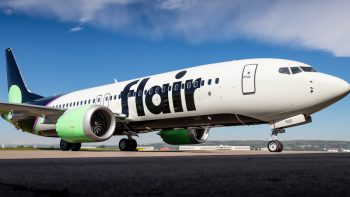
There’s a new plane in town. The Airbus A321XLR (Xtra-long range) has arrived and is being touted as the aircraft which will shake-up route networks worldwide.
Airlines and airports around the world are paying close attention to the debut of this narrow body aircraft which can fly long distances with incredible efficiency. It could be in Air Canada hangars by this time next year.
“AC expects their first two A321XLR neos in late 2025,” AirTrav Inc. President Robert Kokonis told Open Jaw on 20NOV. These aircraft have 500 nautical mile (925 km) further range than the A321LRneo’s."
For years airlines have been begging for a single-aisle plane that could fly long distances with fewer pax, thus helping reduce costs.
Skift.com notes that Airbus in 2019 announced a project to develop a single-aisle airplane that could fly 5,400 miles. This would allow airlines to fly up to 10 or even 11 hours with a plane designed for 182 pax – much fewer than ordinary long-haul jets.
Fast forward five years, and the Airbus A321XLR made its aviation debut in Spain this past week when Iberia Airlines flew the new model from Madrid and Boston.
The plane is designed to seat 14 pax in business class, and 168 in economy. Some airlines, of course, will adjust the seating to suit their needs, including ditching business class for more economy spots.
Airline industry veteran and former senior Air Canada executive Duncan Bureau told Open Jaw that Canadian airlines will try to get ahold of the XLR "as fast as they can."
Iberia president Marco Sansavini said the extended range of the A321XLR “enables countless new non-stop destinations.”
"The economics make sense," Bureau said. "The A321XLR is a game changer and any airline that can get this aircraft into their fleet can operate routes that historically were serviced by wide bodies.
"This plane allows airlines to operate on those transatlantic routes that are thin in terms of demand. Now they can operate markets like YYZ-GLA (Scotland) and YUL-TLS (Toulouse) profitably and increase frequency due to the economics afforded by narrow body operations."
“The most widely touted use of the A321XLR is as a route opener, allowing airlines to add longer-distance routes without the financial risk of not filling a 250+ seat widebody,” said simpleflying.com. “An example would be Delta opening routes from its JFK hub to cities like Turin, Krakow, or Bratislava. If the route subsequently requires more capacity, it can always be upgraded to a larger aircraft.”
Airline experts say the XLR will transform global route networks and allow airlines to avoid crowded airports and boost service to smaller destinations. Aer Lingus says it will begin Dublin-Nashville service on the new XLR in April of next year. There also are reports of a Dublin-Indianapolis route.
According to simpleflying.com, Airbus confirmed that it already has over 550 orders from 25 different airlines, including 30 from Air Canada. In theory, the new planes could allow AC to bring more long-range service to smaller Canadian airports, such as Ottawa. It also could help Air Canada bring back old routes using a new, more fuel efficient, and smaller long-range aircraft.
“Long, thinner routes is where the XLR will finds its niche,” Kokonis said. “Potential routes like Edmonton-London and Toronto-Helsinki come to mind, with both routes remaining unserved nonstop for some years now.”
Airbus said the A321XLR “also complements widebody aircraft by serving the same routes at off-peak times or in cases of significant seasonal variation in demand.”
Aviationa2z.com reports the new Airbus model burns 30% less fuel per passenger than the previous generation of aircraft. It also reports the economy class cabin has only 30 inches of seat pitch, less than some competitors. But it says the thin seat design makes the legroom feel more spacious.
The website also notes that the single-aisle design may make the plane feel cramped, although there are spacious overhead bins that will please carry-on fans. There’s also an espresso machine. Cuz, why not?






